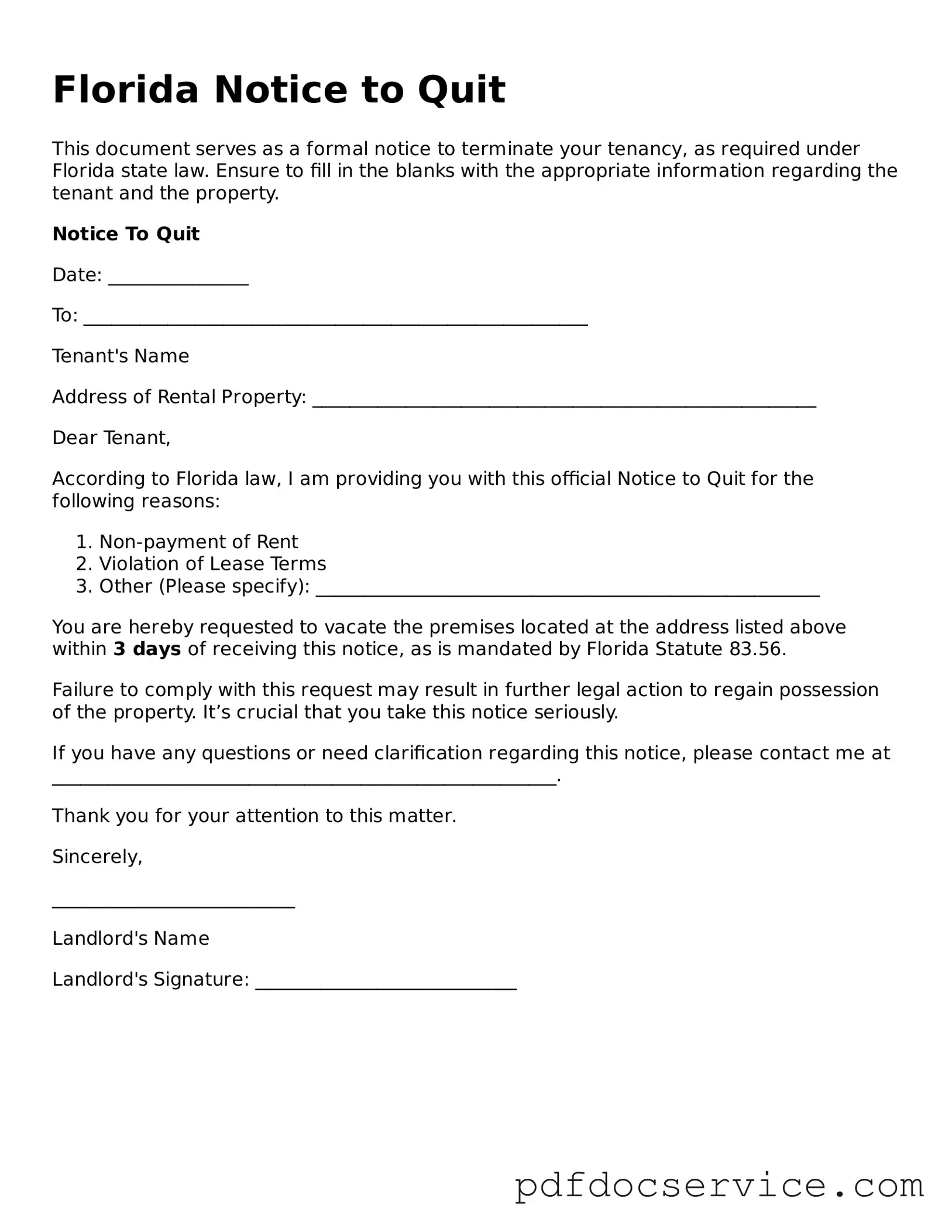The Florida Notice to Quit form is a legal document used by landlords to inform tenants that they must vacate the rental property. This notice is typically issued when a tenant has violated the lease agreement or failed to pay rent. It serves as a formal request for the tenant to leave the premises within a specified time frame.
When should a landlord use a Notice to Quit?
A landlord should use a Notice to Quit in several situations, including:
-
Non-payment of rent
-
Violation of lease terms
-
End of lease term without renewal
Issuing this notice is often the first step in the eviction process.
How much notice must be given to the tenant?
The amount of notice required varies depending on the reason for the notice:
-
For non-payment of rent, a 3-day notice is typical.
-
For lease violations, a 7-day notice is common.
-
For month-to-month leases, a 15-day notice is usually necessary.
Can a tenant respond to a Notice to Quit?
Yes, a tenant can respond to a Notice to Quit. They may choose to rectify the issue, such as paying overdue rent or complying with lease terms. If the tenant disputes the notice, they can also seek legal advice to understand their rights and options.
What happens if the tenant does not leave after receiving the notice?
If the tenant does not vacate the property by the deadline specified in the Notice to Quit, the landlord may proceed with filing an eviction lawsuit. This legal action can lead to a court hearing, where both parties can present their cases.
Is a Notice to Quit the same as an eviction notice?
No, a Notice to Quit is not the same as an eviction notice. The Notice to Quit is a preliminary step that informs the tenant of the need to vacate. An eviction notice is issued after the landlord has filed for eviction and typically follows a court ruling in favor of the landlord.
A Florida Notice to Quit form can be obtained from various sources, including:
-
Online legal form websites
-
Local court offices
-
Legal aid organizations
Ensure that the form complies with Florida law and is properly filled out to avoid legal issues.
